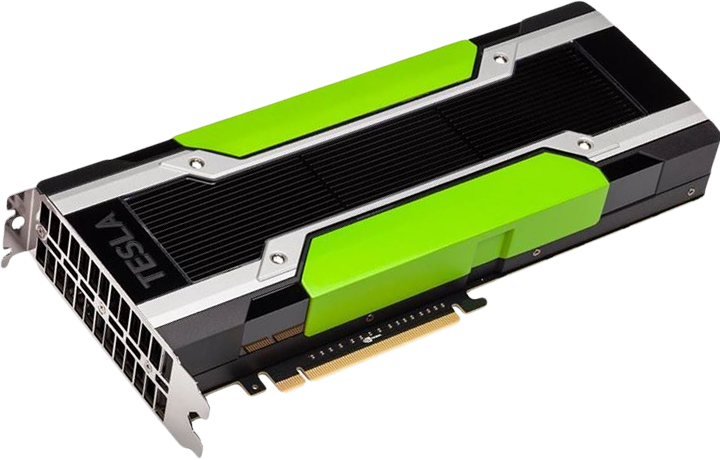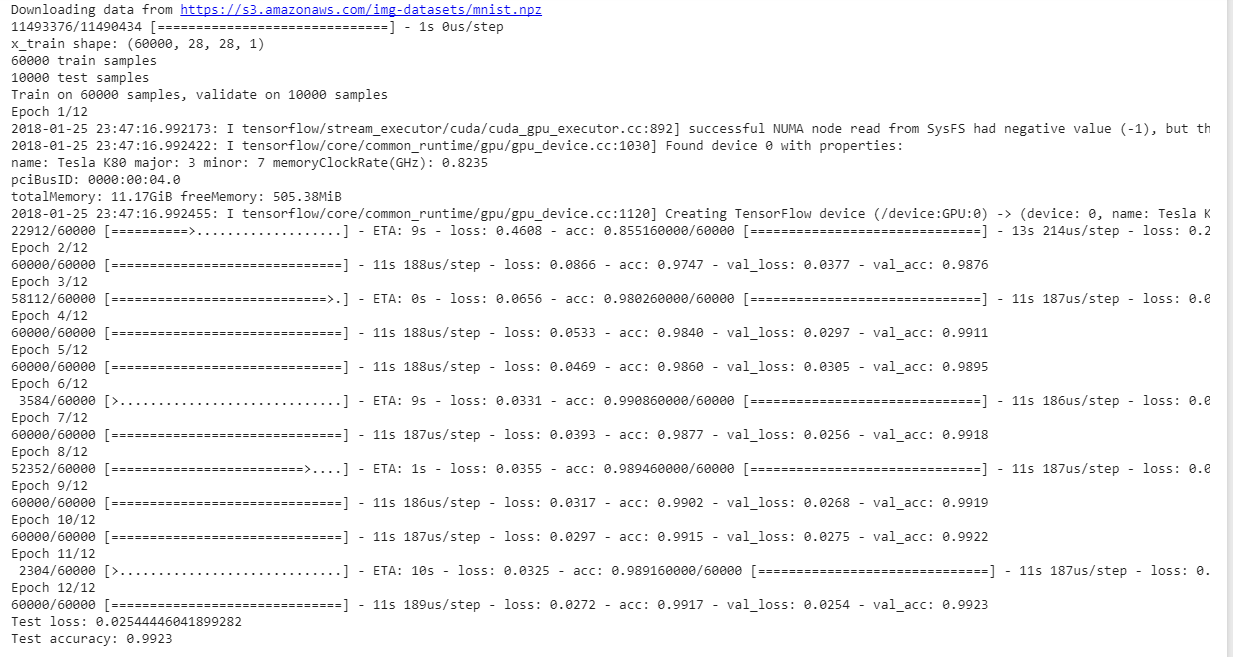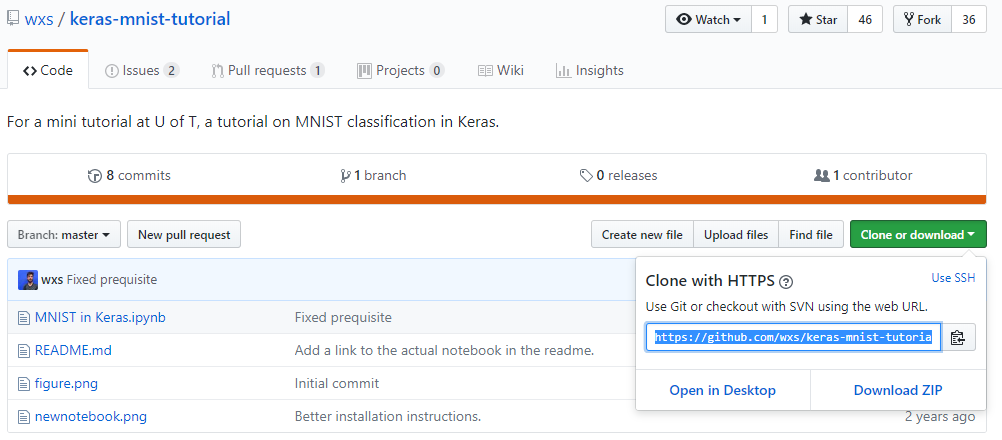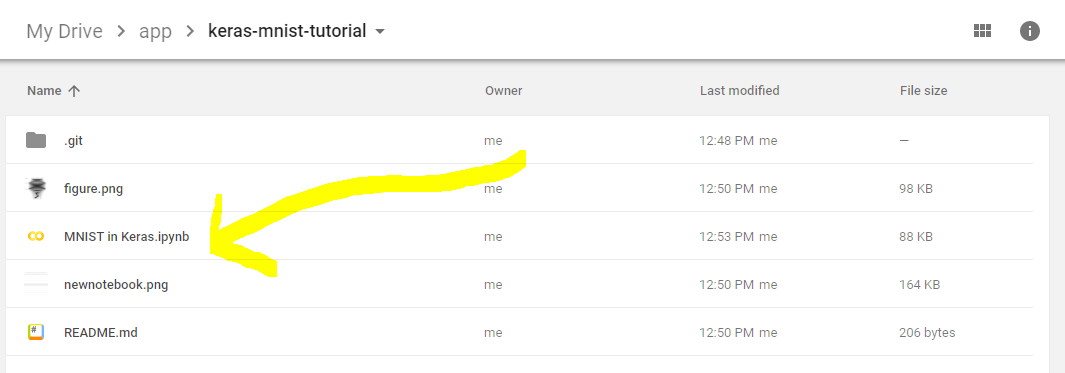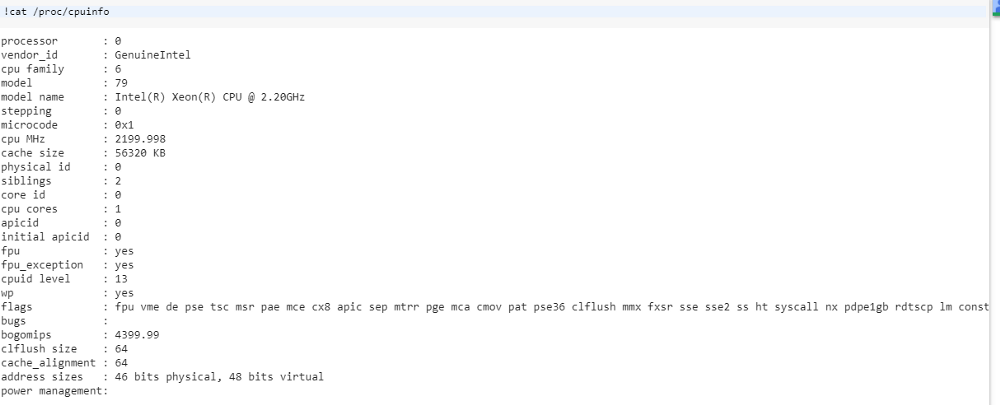гугл коллаб что это
Доброго времени суток уважаемые!
В этом году Google преподнёс всем отличный подарок — открыл бесплатный сервис Google Colab.
Google Colab — это сервис где каждый (нужен акк Google, например от Gmail) может попробовать силы в машинном обучении (искусственный интеллект и другие умные слова).
Нам он интересен чем — можно заниматься стратегиями, расчётами и строить сложные графики. А ещё Google Colab не закрыт для внешнего интернета — скачиваем котировки и данные с других ресурсов.
Даже если вы очень далеки от этого — попробуйте, это просто.
Я расскажу о первых шагах.
Сам Google Colab — это интерфейс Jupyter Notebook (бывший IPython).
from pandas_datareader import data as pdr
import fix_yahoo_finance as yf
yf.pdr_override() # магия
data = pdr.get_data_yahoo(«SPY», start=«2010-01-01», end=«2017-04-30») # скачиваем
data.head(10) # смотрим первые 10 строк
data[‘Adj Close’].plot() # рисуем по колонке Adj Close
(data[‘Adj Close’].pct_change()*100 Code Cells
Я разбил нашу мини-программу на части и исполнил её по ячейкам (последовательно, в ячейку нужно зайти что бы появился треугольник воспроизведения):
В Jupyter Notebook (который в Google Colab бесплатен) можно делать вещи (чаще всего участвует библиотека pandas — с её изучения, помимо базового языка python рекомендую начать самообучение), которые в программах ТА сделать или сложно или долго или вовсе невозможно.
ЗЫ: оффтопик в комментариях удаляется!
The Basics
Colaboratory, or “Colab” for short, is a product from Google Research. Colab allows anybody to write and execute arbitrary python code through the browser, and is especially well suited to machine learning, data analysis and education. More technically, Colab is a hosted Jupyter notebook service that requires no setup to use, while providing free access to computing resources including GPUs.
Yes. Colab is free to use.
Colab resources are not guaranteed and not unlimited, and the usage limits sometimes fluctuate. This is necessary for Colab to be able to provide resources for free. For more details, see Resource Limits
Users who are interested in more reliable access to better resources may be interested in Colab Pro.
Jupyter is the open source project on which Colab is based. Colab allows you to use and share Jupyter notebooks with others without having to download, install, or run anything.
Using Colab
Colab notebooks are stored in Google Drive, or can be loaded from GitHub. Colab notebooks can be shared just as you would with Google Docs or Sheets. Simply click the Share button at the top right of any Colab notebook, or follow these Google Drive file sharing instructions.
If you choose to share a notebook, the full contents of your notebook (text, code, output, and comments) will be shared. You can omit code cell output from being saved or shared by using Edit > Notebook settings > Omit code cell output when saving this notebook. The virtual machine you’re using, including any custom files and libraries that you’ve setup, will not be shared. So it’s a good idea to include cells which install and load any custom libraries or files that your notebook needs.
Yes. Choose «Upload notebook» from the File menu.
You can search Colab notebooks using Google Drive. Clicking on the Colab logo at the top left of the notebook view will show all notebooks in Drive. You can also search for notebooks that you have opened recently using File > Open notebook.
Code is executed in a virtual machine private to your account. Virtual machines are deleted when idle for a while, and have a maximum lifetime enforced by the Colab service.
Selecting Runtime > Factory reset runtime to return all managed virtual machines assigned to you to their original state. This can be helpful in cases where a virtual machine has become unhealthy e.g. due to accidental overwrite of system files, or installation of incompatible software. Colab limits how often this can be done to prevent undue resource consumption. If an attempt fails, please try again later.
Google Drive imposes a limit on how much data can be stored in it by each user. If Drive operations are failing with Input/output error and a notification says storage quota has been exceeded, delete some files using drive.google.com and Empty your Trash to reclaim the space. It might take a little while for the reclaimed space to be available in Colab.
If you’d like to purchase more Drive space, visit Google Drive. Note that purchasing more space on Drive will not increase the amount of disk available on Colab VMs. Subscribing to Colab Pro will.
Resource Limits
In order to be able to offer computational resources for free, Colab needs to maintain the flexibility to adjust usage limits and hardware availability on the fly. Resources available in Colab vary over time to accommodate fluctuations in demand, as well as to accommodate overall growth and other factors.
Some users want to be able to do more in Colab than the resource limits allow. We have heard from many users who want faster GPUs, longer running notebooks and more memory, as well as usage limits that are higher and don’t fluctuate as much. Introducing Colab Pro is the first step we are taking towards serving users who want to do more in Colab. Our long term goal is to continue providing a free version of Colab, while also growing in a sustainable fashion to meet the needs of our users. If you are interested in doing more in Colab than the resource limits of the free version of Colab allow, please try out Colab Pro and let us know what you think.
Colab is able to provide free resources in part by having dynamic usage limits that sometimes fluctuate, and by not providing guaranteed or unlimited resources. This means that overall usage limits as well as idle timeout periods, maximum VM lifetime, GPU types available, and other factors vary over time. Colab does not publish these limits, in part because they can (and sometimes do) vary quickly.
GPUs and TPUs are sometimes prioritized for users who use Colab interactively rather than for long-running computations, or for users who have recently used less resources in Colab. As a result, users who use Colab for long-running computations, or users who have recently used more resources in Colab, are more likely to run into usage limits and have their access to GPUs and TPUs temporarily restricted. Users with high computational needs may be interested in using Colab’s UI with a local runtime running on their own hardware. Users interested in having higher and more stable usage limits may be interested in Colab Pro.
The types of GPUs that are available in Colab vary over time. This is necessary for Colab to be able to provide access to these resources for free. The GPUs available in Colab often include Nvidia K80s, T4s, P4s and P100s. There is no way to choose what type of GPU you can connect to in Colab at any given time. Users who are interested in more reliable access to Colab’s fastest GPUs may be interested in Colab Pro.
Note that using Colab for cryptocurrency mining is disallowed entirely, and may result in your account being restricted for use with Colab altogether.
Notebooks run by connecting to virtual machines that have maximum lifetimes that can be as much as 12 hours. Notebooks will also disconnect from VMs when left idle for too long. Maximum VM lifetime and idle timeout behavior may vary over time, or based on your usage. This is necessary for Colab to be able to offer computational resources for free. Users interested in longer VM lifetimes and more lenient idle timeout behaviors that don’t vary as much over time may be interested in Colab Pro.
The amount of memory available in Colab virtual machines varies over time (but is stable for the lifetime of the VM). (Adjusting memory over time allows us to continue to offer Colab for free.) You may sometimes be automatically assigned a VM with extra memory when Colab detects that you are likely to need it. Users interested in having more memory available to them in Colab, and more reliably, may be interested in Colab Pro.
Resources in Colab are prioritized for users who have recently used less resources, in order to prevent the monopolization of limited resources by a small number of users. To get the most out of Colab, consider closing your Colab tabs when you are done with your work, and avoid opting for a GPU when it is not needed for your work. This will make it less likely that you will run into usage limits in Colab. Users interested in going beyond the resource limits in the free version of Colab may be interested in Colab Pro.
Colab offers optional accelerated compute environments, including GPU and TPU. Executing code in a GPU or TPU runtime does not automatically mean that the GPU or TPU is being utilized. To avoid hitting your GPU usage limits, we recommend switching to a standard runtime if you are not utilizing the GPU. Choose Runtime > Change Runtime Type and set Hardware Accelerator to None.
For examples of how to utilize GPU and TPU runtimes in Colab, see the Tensorflow With GPU and TPUs In Colab example notebooks.
Additional Questions
Colab works with most major browsers, and is most thoroughly tested with the latest versions of Chrome, Firefox and Safari.
In 2014 we worked with the Jupyter development team to release an early version of the tool. Since then Colab has continued to evolve, guided by internal usage.
Colab focuses on supporting Python and its ecosystem of third-party tools. We’re aware that users are interested in support for other Jupyter kernels (eg R or Scala). We would like to support these, but don’t yet have any ETA.
Open any Colab notebook. Then go to the Help menu and select ”Send feedback. ”.
Colab uses HTML iframes and service workers hosted on separate origins in order to display rich outputs securely. Browsers require enabling third-party cookies to use the service workers within iframes. An alternative to enabling third-party cookies for all sites is to allow the following hostname in your browser settings: googleusercontent.com.
Colab uses a generic monospace font for the editor. You can configure what font family is used for monospace in most modern browsers. Here’s a few common ones:
Python 2 is no longer supported in Colab. For information on migrating your code from Python 2 to Python 3, see Porting Python 2 Code to Python 3.
There is an FAQ for Colab Pro on the Colab Pro sign-up page.
Information for Colab Pro and Pro+, including pricing and how upgrades are handled, can be found at the Colab Pro and Pro+ sign-up page.
Русские Блоги
Подробное руководство Colab
Одно очень важно: он привязан к драйверу Google! Каждый раз при запуске пользователю будет выделяться новое пространство памяти. Если вы хотите использовать его в течение длительного времени, вы должны загрузить файл в свой драйвер Google. Давайте изучим, как использовать драйвер Google постоянно!
1. Развертывание
1. Установите плагин Google Assistant.
Отвечайте требованиям к сети.
2. Зарегистрируйте аккаунт Google
Метод регистрации: https://jingyan.baidu.com/article/15622f24a295c2bdfcbea5f5.html
3. Войдите в Google Cloud.
Google Cloud: https://drive.google.com
4. Ассоциированная лаборатория
Учетная запись Google используется для проверки процесса ассоциации. https://colab.research.google.com/
5. Войдите в Google Colaboratory.
Информация о видеокарте
Таблица рейтинга вычислительной мощности графических процессоров Nvidia Tesla
Запись:
Каждые 12 часов Colab будет принудительно восстанавливать занятые ресурсы, обратите внимание на сохранение модели обучения.
Посмотреть версию Torch (дополнительно)
Например: установить matplotlib
2. Обучение
Для обучения и тестирования достаточно среды интерактивного блокнота. Но в то же время для более сложных проектов и крупномасштабной обработки данных Colab также предоставляет относительно удобные операции.
1. Шаги следующие:
(1) Создайте проект.
Создайте папку проекта в облаке Google.
(2) Загрузите проект.
Не рекомендуется загружать большие объемы данных изображения.
(3) Фоновое выполнение:
В папке проекта щелкните правой кнопкой мыши и выберите Colaboratory. Untitled0.ipynb появится в папке проекта, какФоновое окно. В то же время всплывает окно Untitled0.ipynb, чтобы управлять проектом в бэкэнде. Для начала нужно подключить Colab и облакоMountПриходите вместе.
2. Дополнительно:
(1) Распакуйте сжатый пакет.
(2) Удалить
3. Преимущества и недостатки совместной работы
(1)преимущество
(2)Недостаток
4. Хорошая ссылка на статью:
Это лучший инструмент для пользователей обучения или глубокого обучения, но если вы хотите провести исследование в области CV / NLP, производительности явно недостаточно. Рекомендуется настроить хороший сервер илиКомпьютерщик Облако/Али Клауд/Tencent CloudКонцессионный облачный сервер.
Интеллектуальная рекомендация
метаданные кластера Кафка в распределении памяти Zookeeper
Срок действия сертификата безопасности TeamViewer истек, решение
[JVM] Анализ памяти Java
https://www.cnblogs.com/wyb628/p/8566337.html thread dump Основная запись выполнения JVM в определенное время, в виде стека, является текстовым файлом. Конкретный код будет исправлен, анализируя пробл.
Распознавание лиц Чтение бумаги (4)
1. Узким местом распознавания лица является шум Краткое описание: В контексте растущего размера набора данных, а также богатой структуры сети и функции потерь, понимание источника шума метки и консенс.
bzoj3784 Путь в дереве точки разделяй и властвуй + RMQ + приоритетная очередь
Тематический анализ Путь по дереву? Да, это немного разделяй и властвуй. Найдите самый длинный m m mДлина штанги? Да, это очередь с приоритетом. Но проблема в том, что очередь с приоритетами может исп.
Дата публикации Jun 18, 2019
гоогле коллабораторияявляется инструментом исследования для науки о данных и машинного обучения. Это среда ноутбука Jupyter, которая не требует настройки для использования. На сегодняшний день это один из самых популярных инструментов, особенно для специалистов по обработке данных, поскольку вам не нужно вручную устанавливать все пакеты и библиотеки, просто импортируйте их напрямую, вызывая их. В то время как в обычной IDE вы должны вручную установить библиотеки. Кроме того, записные книжки предназначены для кода и объяснения, часто они должны выглядеть как пост в блоге. Я использую Google Colab с последних двух месяцев, и это был лучший инструмент для меня. В этом блоге я дам вам, ребята, несколько советов и подсказок по освоению Google Colab. Оставайтесь с нами, читайте все пункты, это были функции, которые даже я изо всех сил пытался реализовать с самого начала, теперь я освоил это. Давайте рассмотрим лучшие возможности ноутбука Google Colab.
1) Запуск ячейки:
2) Загрузка файлов
Это может быть очень болезненной задачей, если вы выполните некоторые случайные онлайн-уроки. Но у меня есть простое решение, состоящее из одного шага: вам не нужно писать дополнительные коды или выполнять какие-то дополнительные задачи, тогда как вам просто нужно загрузить их вручную в Colab. Вот способ сделать это.
Изображение ниже ясно показывает, что вы должны щелкнуть правой кнопкой мыши на стрелке, которая выглядит как «>На левой стороне клеток. Когда вы нажмете, что вы найдете вкладку с тремя вариантами, вам просто нужно выбрать «файлы». Затем вы можете легко загрузить свой файл с помощью «ЗагрузитьВариант. Есть одна вещь, которую вы должны знать, вы должны загрузить файл за пределы «образцыПапка. Там вы идете, ваша работа сделана.
Вот как это выглядит, когда вы загружаете свой файл в colab.
3) Уроки в Colab
Знаете ли вы, что Google Colab не только используется для ввода кода, но и является хорошим местом для изучения концепций машинного обучения, панд, нейронных сетей. Это правда, что вы можете найти в Colab несколько учебных пособий, которые помогут вам улучшить свои навыки. Чтобы найти эти учебники, просто нажмите>на левой стороне и нажмите «Оглавление»-> «Больше ресурсов«Вы можете найти кучу учебников там.
4) Загрузка изображений в свой блокнот.
Иногда вам нужно загрузить изображения в свой блокнот, просто чтобы прояснить ситуацию. Добавление изображений может быть сложным, если вы будете следовать учебным пособиям онлайн. Я обнаружил, что одним из простых способов было использование бесплатного хостинга изображений для отображения вашего изображения в блокноте. Для этого используйте «TinyPic”, Который является лучшим веб-сайтом для загрузки ваших изображений, который дает вам множество ссылок для выбора после размещения ваших изображений, таких как HTML, Url и многие другие. Вы также можете загрузить «ВидеоНа этом сайте.
После того как вы загрузите изображение в TinyPic, вам просто нужно скопировать ссылку в соответствии с вашими требованиями и затем вставить «Текст» раздел. Там вы идете, ваша работа сделана.
5) Использование Tab для завершения кода.
Это одна из лучших функций в Colab под названием «Завершение вкладки». Заполнение вкладками очень полезно, особенно когда вы не уверены в методах функции. Он отображает вам все перечисленные методы, а затем вы можете выбрать метод, который вам нужен. Для этого нужно просто нажать «табуляция”На клавиатуре, и вы получите полный список всех эквивалентных методов для выбора.
6) Прямое сохранение в GitHub
Google Colab дает вам возможность сохранить ваш проект в репозитории GitHub, что очень удобно. Эта опция помогает вам утомительно загрузить ваш проект на вашGitHubвручную, скорее это может автоматически сохранить ваш проект в вашем хранилище. Для этого просто нажмите на «файл«Вкладку в верхней части экрана, а затем нажмите на опцию»Сохранить копию в GitHub».
7) Сохранение вашего проекта в формате PDF
Это было одной из болезненных задач для меня, если только мой профессор не научил меня, как это сделать. Потому что иногда вам может понадобиться отправить PDF-документ вашей записной книжки для большей читабельности Потому что этот файл IPYNB не читается, если у вас нет парсера. Таким образом, чтобы сохранить документ в формате PDF, просто нажмите «Ctrl-PИ нажмите «Сохранить как»PDF». Там вы идете, ваша работа сделана. Я знаю, что это простой процесс, но иногда этот простой процесс может быть болезненным в заднице, если вы не знаете, как это сделать.
8) Импорт библиотек без установки.
Google Colab предоставляет уникальную функцию, которую не предоставляет даже лучшая среда IDE, например:Импорт библиотек без установок», Вам не нужно вручную устанавливать какие-либо библиотеки перед их импортом, все что вам нужно сделать, это просто сказать, напримеримпорт панд в виде pdПо сути, и тогда ваша работа сделана, прошли те дни, когда вы должны напечататьpip install pandasв вашей командной строке, что отвратительно. Это действительно одна из лучших функций Google Colab.
Выше приведены основные функции или советы по использованию Google Colab, в Google Colab есть все, вы просто используете свой мозг для их реализации. Кроме того, я надеюсь, что чтение этого блога поможет вам лучше понять, как использовать Google Colab как профессионал. Спасибо, ребята, что уделили время чтению моего блога, следите за обновлениями. Дайте мне знать, что вы думаете об этом посте в разделе комментариев ниже. Кроме того, если у вас есть какие-либо сомнения относительно поста, раздел комментариев остается за вами. Хорошего дня.
Google Colab Free GPU Tutorial
Before we start, I would like to recommend you to join the leading community for AI experts and aspiring talents around the world: Global AI Hub.
Hello! I will show you how to use Google Colab, Google’s free cloud service for AI developers. With Colab, you can develop deep learning applications on the GPU for free.
Thanks to KDnuggets!
I am happy to announce that this blog post was selected as KDnuggets Silver Blog for February 2018! Read this on KDnuggets.
What is Google Colab?
Google Colab is a free cloud service and now it supports free GPU!
The most important feature that distinguishes Colab from other free cloud services is; Colab provides GPU and is totally free.
Detailed information about the service can be found on the faq page.
Getting Google Colab Ready to Use
Creating Folder on Google Drive
Since Colab is working on your own Google Drive, we first need to specify the folder we’ll work. I created a folder named “ app” on my Google Drive. Of course, you can use a different name or choose the default Colab Notebooks folder instead of app folder.
Creating New Colab Notebook
Create a new notebook via Right click > More > Colaboratory
Rename notebook by means of clicking the file name.
Setting Free GPU
It is so simple to alter default hardware (CPU to GPU or vice versa); just follow Edit > Notebook settings or Runtime>Change runtime type and select GPU as Hardware accelerator.
Running Basic Python Codes with Google Colab
Now we can start using Google Colab.
I will run some Basic Data Types codes from Python Numpy Tutorial.
It works as expected 🙂 If you do not know Python which is the most popular programming language for AI, I would recommend this simple and clean tutorial.
Run these codes first in order to install the necessary libraries and perform authorization.
When you run the code above, you should see a result like this:
Click the link, copy verification code and paste it to text box.
After completion of the authorization process, you should see this:
Now you can reach you Google Drive with:
upload mnist_cnn.py file to app folder which is located on your Google Drive.
run the code below to train a simple convnet on the MNIST dataset.
As you can see from the results, each epoch lasts only 11 seconds.
Download Titanic Dataset (.csv File) and Display First 5 Rows
Cloning Github Repo to Google Colab
It is easy to clone a Github repo with Git.
Step 1: Find the Github Repo and Get “Git” Link
Find any Github repo to use.
Clone or download > Copy the link!
2. Git Clone
3. Open the Folder in Google Drive
Folder has the same with the Github repo of course 🙂
4. Open The Notebook
Right Click > Open With > Colaboratory
5. Run
Now you are able to run Github repo in Google Colab.
Some Useful Tips
1. How to Install Libraries?
!pip3 install torch torchvision
2. Is GPU Working?
To see if you are currently using the GPU in Colab, you can run the following code in order to cross-check:
3. Which GPU Am I Using?
Currently, Colab only provides Tesla K80.
4. What about RAM?
5. What about CPU?
6. Changing Working Directory
Normally when you run this code:
You probably see datalab and drive folders.
Therefore you must add drive/app before defining each filename.
To get rid of this problem, you can simply change the working directory. (In this tutorial I changed to app folder) with this simple code:
After running code above, if you run again
You would see app folder content and don’t need to add drive/app all the time anymore.
7. “ No backend with GPU available “ Error Solution
If you encounter this error:
Try again a bit later. A lot of people are kicking the tires on GPUs right now, and this message arises when all GPUs are in use.
8. How to Clear Outputs of All Cells
Follow Tools>>Command Palette>>Clear All Outputs
9. “apt-key output should not be parsed (stdout is not a terminal)” Warning
If you encounter this warning:
That means authentication has already done. You only need to mount Google Drive:
10. How to Use Tensorboard with Google Colab?
I recommend this repo:
11. How to Restart Google Colab?
In order to restart (or reset) your virtual machine, simply run:
12. How to Add Form to Google Colab?
In order not to change hyperparameters every time in your code, you can simply add form to Google Colab.
For instance, I added form which contain learning_rate variable and optimizer string.
13. How to See Function Arguments?
To see function arguments in TensorFlow, Keras etc, simply add question mark (?) after function name:
Now you can see original documentation without clicking TensorFlow website.
14. How to Send Large Files From Colab To Google Drive?
15. How to Run Tensorboard in Google Colab?
If you want to runt Tensorboard in Google Colab, run the code below.
You can track your Tensorboard logs with created ngrok.io URL. You will find the URL at the end of output.
Note that your Tensorboard logs will be save to tb_logs dir. Of course, you can change the directory name.
After that, we can see the Tensorboard in action! After running the code below, you can track you Tensorboard logs via ngrok URL.



















